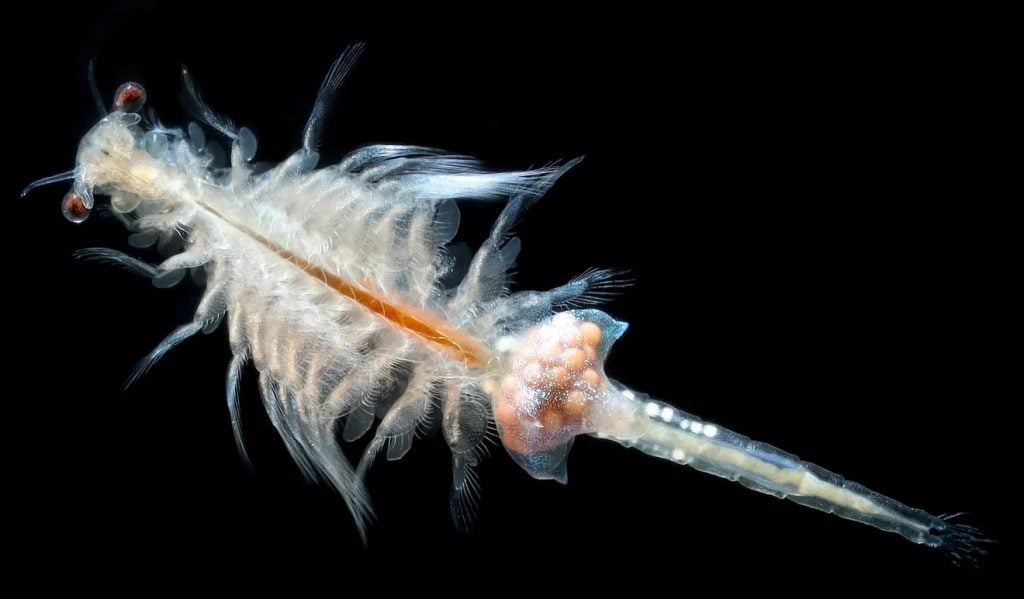A Can Of Monster, A Viral Tiktok And Climate Change: It’s Time To Meet Sea Monkeys In 2022
This just in: Sea Monkeys are having a renaissance.
If you’ve ever been 8 years old, you’ve probably reared a Sea Monkey and the good news to report back to your inner child is that the little fellas are back in the spotlight thanks to Tiktoker Artemia Daddy.
John Bozinov is the mastermind behind the account which is making people fall in love with Sea Monkeys all over again. You might have seen that video where someone puts drops of Monster energy drink into a Sea Monkey tank which makes the Sea Monkeys grow abnormally large. Well, that someone is John and sadly that video wasn’t real, rather an April fools prank.
@artemiadaddy Reply to @sniipxzy MONSTER SEA MONKEYS #cap ♬ Warm Christmas Lofi Beat – Gloveity
John is a photographer who has been documenting Antarctica and the Arctic through his photos over the past 5 years, but when COVID struck he had some time up his sleeve so he decided to turn his eye to capturing the wondrous world of Sea Monkeys.
“I was quite surprised at how much traction the videos got to be honest, because I’m well aware that they’re a very niche and unusual hobby,” laughed Bozinov.
“So I put them on TikTok just to put them out there and see what would happen. I was quite pleasantly surprised with the traction and the audience that it gained after a few weeks.”
John’s Sea Monkey videos now have over 10 million likes and range from sharing videos of rare tanks, close up footage as well as tips and tricks on how to look after your little pets.
But have you ever wondered what a Sea Monkey actually is? That thing swimming around your tank is a brine shrimp. It’s a tiny little crustacean that likes to live in salty pools and lakes, and what makes it unique is that when brine shrimp eggs dry out those eggs can lie dormant ready to hatch for over a decade.
This makes them the perfect eggs to be placed into small packets until someone picks them up, adds water and transforms the dust like spectacle into their own mini aquarium.
The girlbossification of the animal kingdom continues when I learnt that female Sea Monkeys don’t need a fella to pop out eggs and honestly I wish I could do the same.
One of John’s favourite things about Sea Monkeys is that they have multiple reproductive methods.
“So they have reproduction through sexual means, where the male and the female will mate and the female will produce offsprings. But even if there’s no males present, the female is still capable of bearing young.”
“So even if you only have one female Sea Monkey she can still have plenty of babies.”
It seems the girlbossification of the animal kingdom lives another day as female Sea Monkeys don’t need a fella to pop out any eggs and honestly I wish I could do the same.

A pregnant Sea Monkey under the microscope (Image: Dan Olsen)
In parts of Western Australia there are lakes that have wild brine shrimp aka Sea Monkeys swimming around living their best lives. But when it comes to the Sea Monkey eggs we buy for our mini aquariums most of them come from the Great Salt Lake in Utah.
In fact, there are trillions of brine shrimp in the Great Salt Lake and John noted how boats will go out and collect brine shrimp eggs to later dry and ship out. The vast majority of brain shrimp eggs that are sold worldwide are bought in bulk for feeding aquarium fish. Once those eggs are put in salt water they hatch and then fish owners have little crustaceans to feed to their fish.
However it’s not all fairy tales and colourful tanks for Sea Monkeys, if you thought being shipped off to be chomped on by another fish was the worst thing to happen to them then think again because Sea Monkeys are sadly not immune to the impacts of climate change.
Like all parts of the animal kingdom global warming is having an impact on habitats and while it might be surprising to draw a link between climate range and Sea Monkeys, that link is definitely there.
The Great Salt Lake aka Sea Monkey HQ has already shrunk by two-thirds and is continuing to dry up.
This will impact the brine shrimp colonies and also the 10 million migratory birds that stop at the lake each year.
While we’re still a long way off from seeing Sea Monkeys become extinct, the outpouring of love for them on John’s videos become just another reminder as to why we need serious climate action, because who wants a world without Sea Monkeys?


